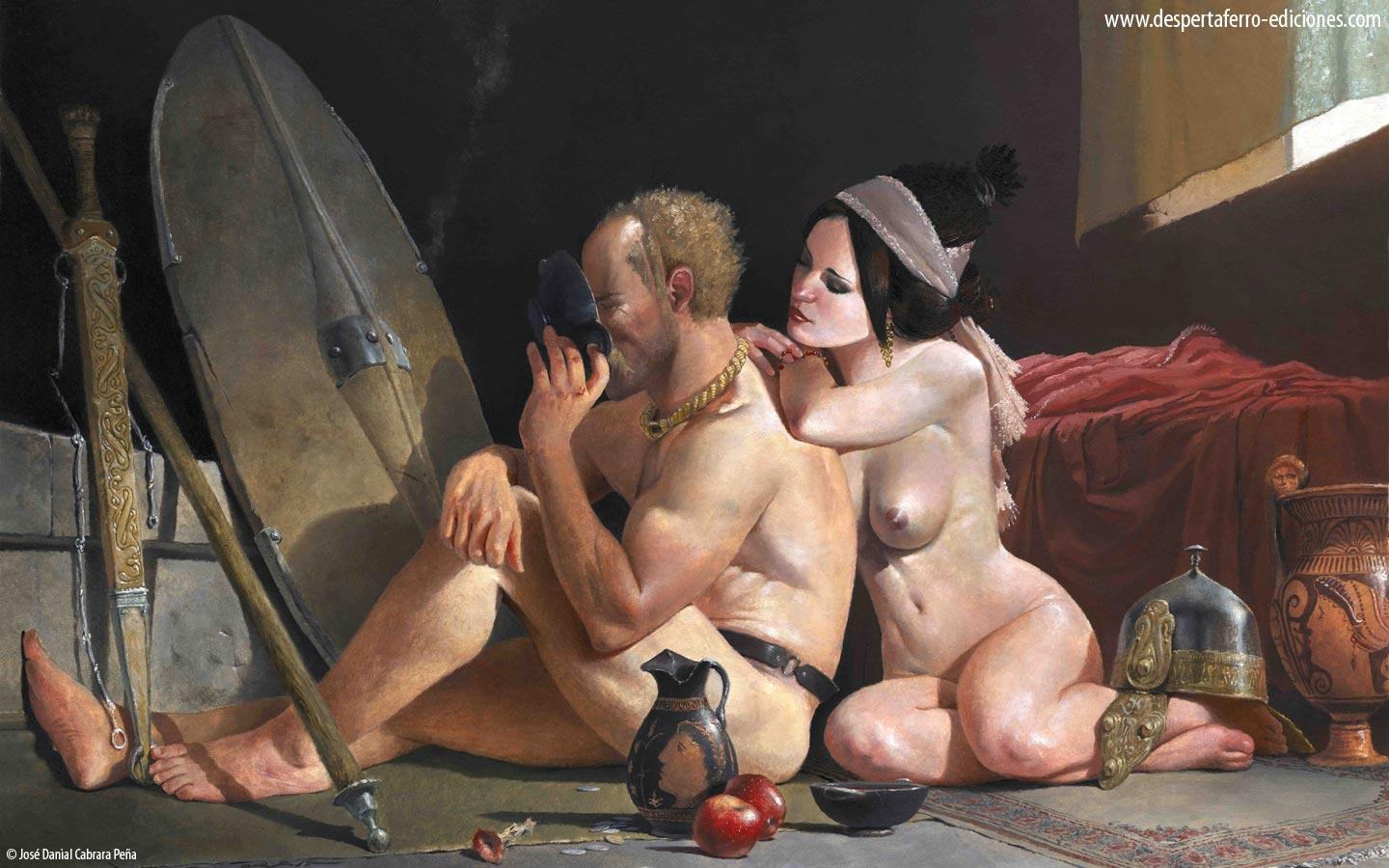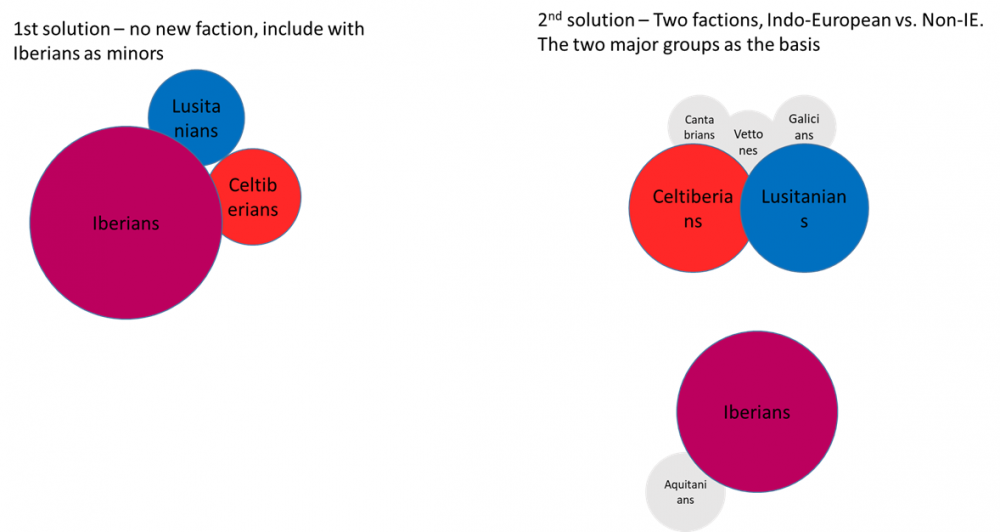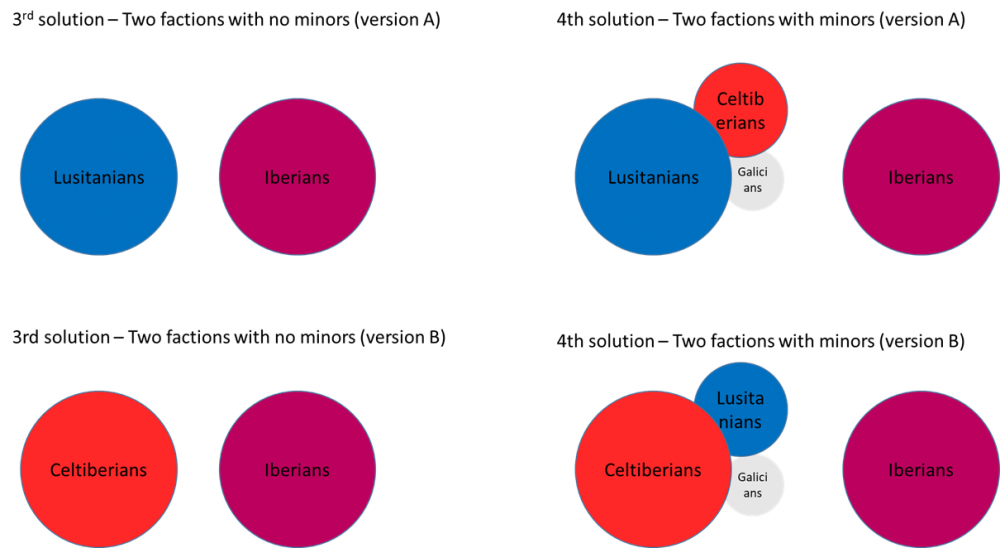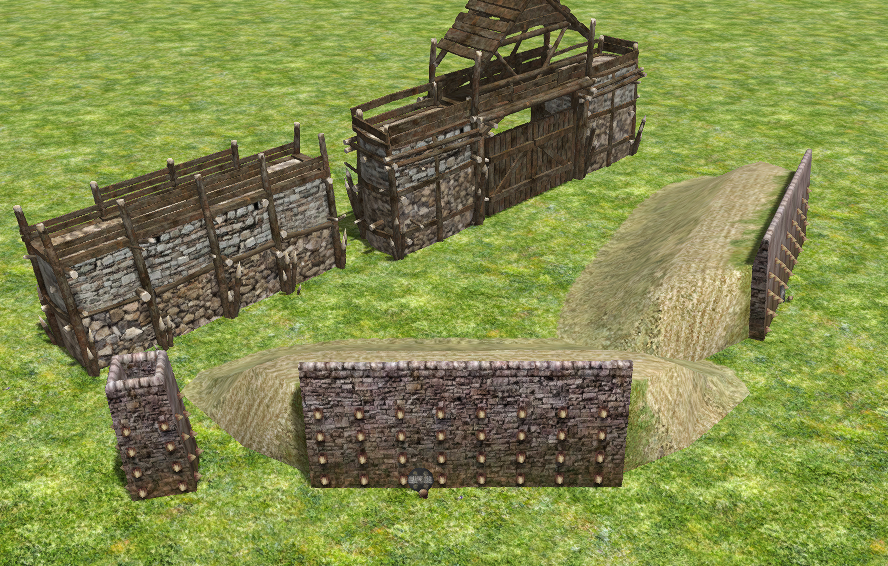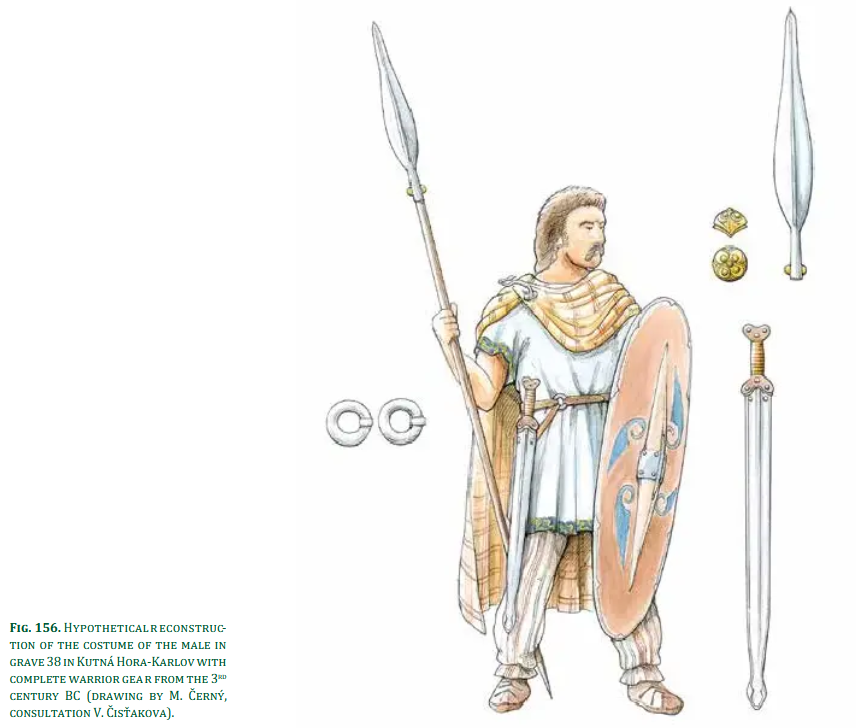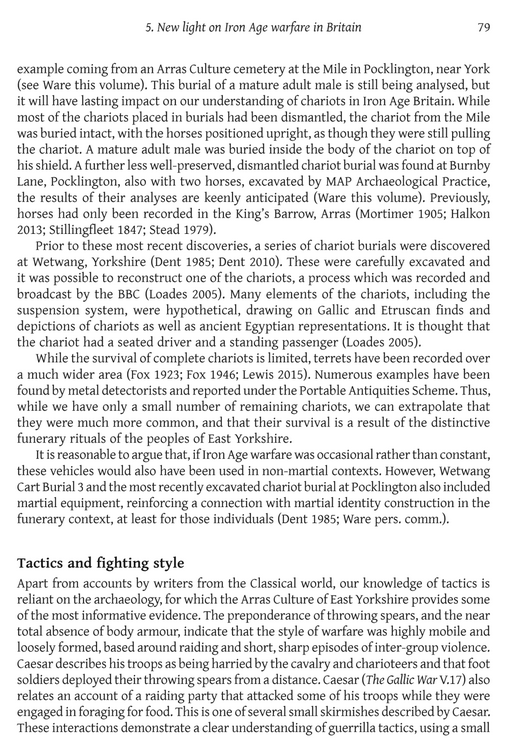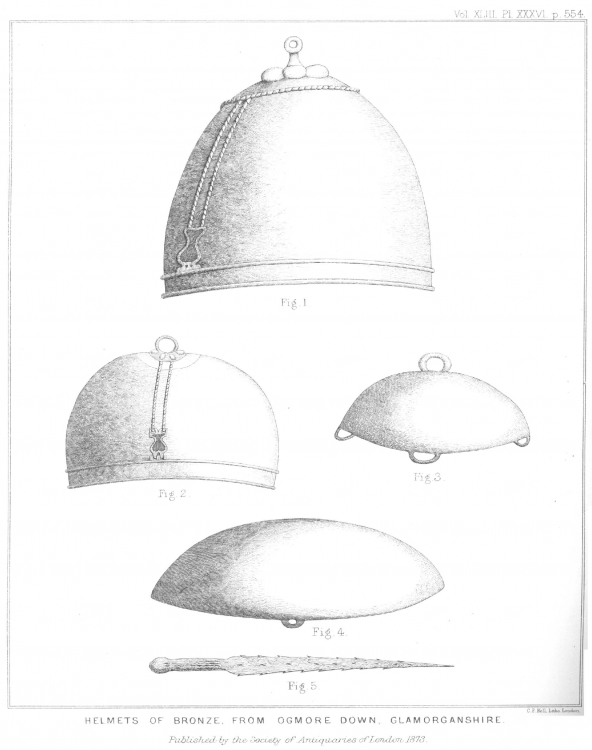-
Posts
2.379 -
Joined
-
Last visited
-
Days Won
80
Everything posted by Genava55
-
They have been replaced in Europa Barbarorum II (I see you took your inspiration from EB1), now the Parthians and the Seleucids have access to: Payadag i Kardakan / Persian Heavy Spearmen These men have been trained and carry uniform equipment, making them more reliable than other eastern infantrymen. Equipped with thureos shields and spears, they provide a strong infantry line, which levied men would not be able to hold against organised opposition. Historically the Hakhamanishiya had always promoted a common education, in theory open to everyone, but only the nobility could truly afford it. All of this resulted in a comprehensive system, which provided future officials and administrators, but was also integral to the preparation for military life. Split in companies of 50 youths, led generally by the noblest of them, they followed a daily routine of exercises and studies. Specifically they were trained to increase their endurance through proper breathing techniques, but also how to resist the cold, heat and rains, to cross streams while keeping their clothing and armour dry, to tend to flocks and how to live outdoors all night, eating wild fruits like pistachios, acorns and pears. Moreover these youths ate and hunted together, while after their exercises they were instructed in the planting of trees, cutting and gathering of wood or roots and the making of weapons, hunting nets and linen clothing. All of this signified a rite of passage, because during this period the youths proved that they could be admitted to the adult part of society. Even ancient authors noted the similarities to the Spartan Agoge and especially the Krypteia, however Strabon recorded how these youths were known as Kardaka, because Karda according to him meant manly and warlike spirit. This root word however, actually described those wandering or travelling, denoting the behaviours these youths had to learn. With the shortage of Hellenic mercenaries in the late 4th century BC, the Satrapal administration extended part of this system to young men in their dependencies, in order to develop a larger pool of trained infantry. This very infrastructure later allowed Alexandros Megas to muster and train Asiatikoi in Hellenistic warfare and indeed the practice was kept alive by the Seleukidai, who improved the Kardaka even further by furnishing them thureos shields. Erin-mesh Uriki / Akkadian Elite Infantry These men are the closer order infantry of the Akkadian peoples of Mesopotamia. Many of them wear some armour, helmets and light thorakes, and all carry aspides to go with their long spears. The spears give them good length when defending city walls, fending off cavalry, running down light troops, or challenging sarissa-equipped phalanxes. The Erin-mesh Uriki are drawn from the citizen rolls of Akkadian cities, and were customarily employed as guardians of cities and temples and as emergency militia during wartime. Historically, the heyday of Akkadian arms was well past, although the monuments of Babylon, Uruk, and other places stand as testament to the Akkadians of the power their forefathers once held. The Akkadians were well-accustomed, for many years, to both pitched battle in close order formation and to skirmishes against lighter troops from the Arabian desert to the southwest and the highlands to the east. In the Persian Wars, the Akkadians were marshalled together with the Assyrians and Arameans, and even then carried concave round shields comparable to the aspis, lengthy spears, and variations of the machaira (Hdt. 7.63). Akkadians fought at Gaugamela as well under the satrap Mazaios, but soon after found themselves under Makedonian rule. Six thousand were trained by Macedonian instructors and joined Alexander's army in Bactria as pantodapoi, while others continued to serve, probably in traditional panoplies, in garrison duty roles. Babylonian tablets provide strong evidence that Akkadians continued to play limited, mainly regional military roles. Babylonian troops suffered heavy casualties against Ptolemaic phalangites in defence of their city in 245 BC due to their lighter equipment, but managed to hold a few key sectors of the city. Nezagdar / Iranian Spearmen These men represent the lower ranks of retainers to the Azads and nobles who come to the aid of the Shahanshah. They are not wealthy enough to possess their own horse, but are still able to possess enough equipment to fight as line infantry instead of as skirmishers. Armed with spear and reed shields, they can hold a line against lighter foes, but are not able to hold their own for long against more heavily armed opponents. Most of the men in this unit are dressed in everyday clothes, including cloth jackets, pants and leather boots or shoes. Many wear a Kyrbasia, a hat with flaps which can be tied under the chin, or around the back of the neck of the wearer. Often, the flaps could be used to cover the mouth and nose, useful when in arid conditions, where dust clouds from marching would otherwise make breathing hard. Others wear simple cloth caps. Some of them wear tube and yoke armour corselets, made from leather or hardened linen, sometimes with padding added for extra protection. Their reed shields would be made from long pieces of reed on a leather base, where the reeds were fastened by being pushed through holes made in the leather. In this manner, it was possible to render impressive geometric patterns without the need for any paint or other decoration. They carry spears equipped with a ball-shaped butt, which helps to balance the weapon while fighting. Historically, the armies of ancient Iran consisted of generally mounted noblemen, accompanied by their retinue, and levies from their lands. The more elite warriors were often funded by the nobleman himself: the rest were generally civilians who followed their local noble. Although the most prominent section of an Azad's retinue was the armoured cavalry, a larger portion was made up of less well trained and well equipped men. Those peasants and townsmen who could not afford a war horse, but were wealthy enough to purchase armour and weapons would serve as the line infantry. Men like these would have made up the majority of the armies faced by Alexandros, and still during the age of Parthian, and even Sassanian, hegemony, such men would be the mainstay of the infantry forces in Iranian armies.
-
Archeological news about Iron Age in France: https://www.inrap.fr/en/periods/iron-age Le guerrier gaulois de La Gorge-Meillet https://musee-archeologienationale.fr/le-guerrier-gaulois-de-la-gorge-meillet Le guerrier gaulois de La Gorge-Meillet retrouve son visage https://musee-archeologienationale.fr/le-guerrier-gaulois-de-la-gorge-meillet-retrouve-son-visage
- 264 replies
-
- britons
- east celtic
-
(and 2 more)
Tagged with:
-
It was more about the current situation with the Iberians mixing references from different cultures and peoples. Notably the Iberians have Viriathus as a hero. I suggested in the past either to make at least two different civs or to more clearly distinguish the other peoples in the Iberian roster and building tree. Edit: Different approaches to the problem
-
I know, I found the old wall model in the game editor. Indeed it is impossible to make a real rampart for the moment. I am sharing the video simply because this is something I found cool. For the bonus I suggested as a unique tech for the Gauls, this is not really important that the current wall in the game is not a true murus gallicus (anyway only a few people knows the difference).
- 264 replies
-
- 1
-

-
- britons
- east celtic
-
(and 2 more)
Tagged with:
-
Interesting 3D model showing how a mixed type of rampart was built (mixture between Altkönig Preist walls and Murus Gallicus rampart)
- 264 replies
-
- 2
-

-
- britons
- east celtic
-
(and 2 more)
Tagged with:
-
https://www.facebook.com/evropantiqva
- 264 replies
-
- britons
- east celtic
-
(and 2 more)
Tagged with:
-
.thumb.jpg.b21ca1d0c15fb56b42c39b25a0a40815.jpg)
Others RTS - Discuss / Analysis
Genava55 replied to Lion.Kanzen's topic in Introductions & Off-Topic Discussion
Well it really depends on the focus of the gameplay. Stronghold series is known to focus more on the buildings and the economy. The military is more about strategies than tactics, more about macro than micro. Siege defense also plays a big role, with a more dynamic system than 0AD and AoE. So everything stresses the need for open field and wide space. At the opposite, I would say Ancestors Legacy is the perfect example of the reverse situation, focusing more on tactical decisions. Terrain diversity, closer field, chokepoints etc. this is clearly suited to the gameplay. -
.thumb.jpg.b21ca1d0c15fb56b42c39b25a0a40815.jpg)
Total War saga news & videos
Genava55 replied to Lion.Kanzen's topic in Introductions & Off-Topic Discussion
-
.thumb.jpg.b21ca1d0c15fb56b42c39b25a0a40815.jpg)
Others RTS - Discuss / Analysis
Genava55 replied to Lion.Kanzen's topic in Introductions & Off-Topic Discussion
-
- 264 replies
-
- 1
-

-
- britons
- east celtic
-
(and 2 more)
Tagged with:
-
So sad. Now I understand why it hasn't been implemented. And why there is only the aura of Brennus doing this kind of effect. This is sad because it would have been much more interesting for the gameplay. I think it was one of the bonus the most favored by the others. I think +5 for each CC should be a good. This is already a good start ahead. I don't think we need to include Barracks and Fortress in the bonus. The Sheep Age reference is a bit far-fetched, so we can adapt it easily. Actually there is a technology at the coral to reduce the training time of livestock so it should be something else. Reducing of 5 food the cost of an animal? That could be a bit too big on the long term. Basically for 10 animals, it gives one free (although the training time must be taken in consideration). Since players already overexploited the livestock as a broken strategy, I am worried. Increasing collecting speed of citizens on livestock meat, +5%? They are lacking technologies and increasing speed can be quite strong economically so let's go for a special tech. I agree for both. This is fair. Too strong? Or the concept itself? As unique technologies, I think of several for the Gallic cavalry: Trimarkisia. Basically the cavalryman had servants or squires bringing him new weapons and a fresh horse in the height of the action. I suggest an increase in health and/or mobility. Horned saddles. It was something in use in the Celtic cavalry starting around the 2nd century BC and it is commonly thought the Romans adopted it. I suggest an increase in attack for melee cavalry and/or range for skirmisher cavalry. Cavalry sword (cladios or cladiomaros?). The Celts popularized the first long cavalry swords in the West (independently to the nomads), in some case the blade length goes beyond 80 cm. The cavalry sword was adopted by the Roman cavalry as well, notably with the famous metal scabbards decorated with open work plates like in Badenheim and Ljubljanica. I suggest an increase in attack dmg (slashing obviously). ------ @borg- @av93 @badosu Do you have any idea for a bonus that could replace the Vae Victis suggested previously? Something that could encourage an offensive play style. Or do you have any wish about a kind of gameplay lacking in the game actually?
- 264 replies
-
- 1
-

-
- britons
- east celtic
-
(and 2 more)
Tagged with:
-
Thx. Indeed, my idea is to make the Gauls more offensive and the Britons more defensive, with good mobility which a key feature of the Celtic armies in general. The Britons are clearly more often using guerrilla tactics, this is clear in Caesar account and what is explained in Graham Webster books: And this is also what suggest the archaeological remains:
- 264 replies
-
- britons
- east celtic
-
(and 2 more)
Tagged with:
-
I did. It makes sense for the fortresses and the barracks because they are inspired from broch, oppida, hillforts and fortified farms. Place with inhabitants. The thing is that initially, every civ had a population bonus with other buildings than houses. Notably the fortress. So it would make this feature of the Celts very unparticular. BUT, Nescio suggests changing that. See: https://code.wildfiregames.com/D2950 So if the other civ have mostly the houses and the CC to increase their population capacity, then a Celtic faction could have this particular feature of increasing pop with fortresses and barracks. Interesting, this is kinda doing an archaeological dig in 0AD to find this old artifact never implemented displayed on the menu of the game Clearly this is often difficult to strictly differentiate them from the archaeological record, especially in comparison with the other civ. They have more similarities than differences. However, by mixing archaeological and historical references with a bit of imagination and liberty, it is possible to suggest different things. Thank you borg- for the support. To explicit my suggestion (I will put it again below this message), I choose these bonuses for the Gauls because they are associated with the La Tène civilization which is booming early. I suggested the reference to Ambigatos because in Livy account, the Gallic invasions started because Ambigatos asked his sons to settle his people elsewhere to solve an overpopulation crisis (basically). I also liked the reference to Vae Victis and I added the headhunting practice because I think those are well-known references and because I think it would be an interesting mechanic to encourage an offensive gameplay. The reference to the reaper should work nicely with the first bonus to facilitate an early booming. Finally the reference to Montefortino is because the necropolis at this place is a well-known example of cultural exchange between Etruscans and Gallic populations (the Senones). For the Britons, the reference to the Sheep Age comes from an academic publication in which the author says that a zooarchaeologist would divide prehistory in Britain according to the dominant animal in the records and that the Bronze Age and the Iron Age belongs to the Sheep Age until the Roman conquest. The reference to Inis Mona is about the battle of Anglesey, the only account of Druids in a battlefield (although tragic), the Druids didn't fight but prayed and cursed the Romans. The reference to the construction bonus comes from the fact that several hillforts are showing successive occupation with destruction and reconstruction (Danebury is a good example). The reference to bodypainting is really an important feature that should be emphasized in the game to distinguish the Britons with the Gauls. The reference to earthwork comes from the fascinating hillforts we found in southern England with complex ditch and walls made of earth, stones and wood. The teaching center is a reference to the account of Caesar about druidism, suggesting that Gallic Druids went to the British Isles to be trained. Finally a reference to the Celtic Epic literature because the only remaining account of this Celtic tradition is coming from the British Isles and because the Homeric warfare of the Britons would be a good pretext.
- 264 replies
-
- 2
-

-
- britons
- east celtic
-
(and 2 more)
Tagged with:
-
Thank you for taking the time to correct me. It could make sense but it seems to be a very broad bonus. It applies also to fortresses, towers and walls. This is maybe irrelevant for those cases. This one doesn't really make sense from a historical point of view in comparison with other civs. It makes sense. It could be a bonus called "wattle-and-daub", although it could work both with Britons and Gauls. Therefore, this is more a matter of strategical design for the civ. Concerning the Vae Victis mechanics, why it has been removed? Personally I could understand why, especially if there is something similar with the hero Brennus (although it seems associated to units instead, I don't know why), loot and plunder are widespread phenomenon in the past. Maybe it could be replaced with headhunting, which is something more particular in the case of the Gauls.
- 264 replies
-
- britons
- east celtic
-
(and 2 more)
Tagged with:
-
English subtitles in this video, discussing the origin of daggers in the Roman army I also recommend the other videos:
- 264 replies
-
- 1
-

-
- britons
- east celtic
-
(and 2 more)
Tagged with:
-
Interesting depiction of a Gallic warrior:
- 264 replies
-
- 2
-

-
- britons
- east celtic
-
(and 2 more)
Tagged with:
-
illustration of a warrior with a shield based on the Salisbury hoard, a sword based on the hilt from Hod Hill and on the scabbard from Isleham and finally the shield from Leicestershire on the side. Note that the warrior is also carrying a javelin with a bonehead. Finally, this artist is producing a lot of fantasy material but I like the bodypainting of the warrior: https://www.deviantart.com/dewitteillustration/art/Warhammer-Albion-Brightwoad-Bearer-794994101
-
.thumb.jpg.b21ca1d0c15fb56b42c39b25a0a40815.jpg)
===[COMMITTED]=== Roman Infantry (New texture)
Genava55 replied to wackyserious's topic in Completed Art Tasks
A lot of illustrations in those threads: http://imtw.ru/topic/48629-rimskoe-carstvo-regnum-romanum-i-rannyaya-respublika/ http://imtw.ru/topic/969-drevnii-rim-epoha-imperatorov/page__st__110__p__2202023#entry2202023 -
Suggestion. Gauls: Ambigatos: Bonus in population capacity given by any CC Vae Victis: Resources acquired from destroying and capturing buildings Headhunting: Resources acquired from killing heroes (or champions too). Invented the Reaper: Bonus in collecting food from farms Montefortino: team bonus, reduced blacksmith tech cost and research time Britons: Sheep Age: Bonus related to livestock Inis Mona: Druids increase attack speed of nearby units (or reduce attack speed of nearby enemies) Build, Endure and Rebuild: Construction bonus (reduced time or reduced cost) Britanni vitro inficiunt: Bodypainting gives infantry bonus (speed, healtpoints, health regen?) Masters of Earthwork: Reduced stone cost for CC and walls. Teaching Center: team bonus, reduced resources cost for healers. Celtic Epic / Mabinogion: team bonus, reduced training time for champion (or heroes)
- 264 replies
-
- 4
-

-

-
- britons
- east celtic
-
(and 2 more)
Tagged with:
-
Just found sketches of older helmets found in the 19th c., like most things in Britain those are gone: on-ancient-bronze-helmets-found-in-1818-at-ogmore-down-glamorgan-1872.pdf

